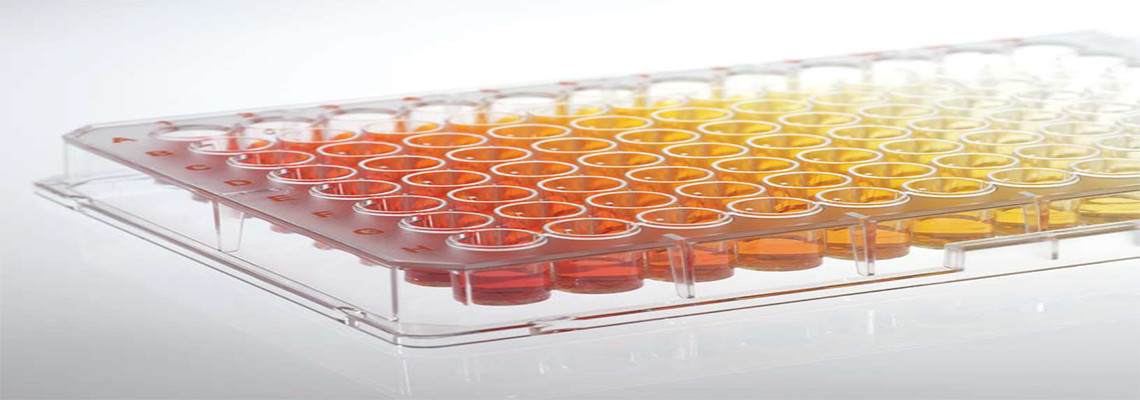Cell Culture Surfaces Variants
Cell culture is increasing in popularity in the research and development area. Outside of basic research, cells are cultivated today for a number of reasons, including the production of proteins and, in particular, as assay systems.
As cell cultures can sometimes be quite demanding regarding their environment, the disposables used for cultivation have to be of highest quality. BRAND has drawn upon its extensive experience in the production of high-quality plastic disposables to expand the product range of BRANDplates ® microplates into the field of cell culture.
c e l l G r a d e™
- Standard plate for the cultivation of adherent cell lines.
- PS-surface with different chemical groups, such as carboxyl and hydroxyl groups, that are freely accessible.
- Surface is hydrophilic compared with non-treated PS.
- Serum components are easily bound onto the freely accessible chemical groups, allowing an indirect adhesion of cells.
- For cultivation of fastidious cell lines.
- In addition to carboxyl and hydroxyl chemical groups, free amino groups are present on the surface.
- The surface has a protein-like composition, so cells can directly attach and spread out.
- Cells adhere faster, better rate of yield.
- Sensitive cell lines can be cultivated.
- Suited for serum-reduced cultivation of cells.
- Poly-D-Lysine-equivalent surface, with analogous results regarding growth performance and cell morphology.
- Optimal adhesion of cells to the surface reduces cell damage when washing frequently.
- Cultivation of cell lines with the highest demands on their environment.
- Surface suited for serum-free and serum-reduced cultivation of cells.
- Good shelf life at room temperature.
- Alternative option to biologically coated surfaces.
- Especially suited for cell cultures, when adhesion is not desired.
- Optimized surface characteristics reduce cell adhesion and protein adsorption, minimizing enzyme and cellular activation.
- Inhibits early differentiation of stem cells.
- *C-Bottom: 0.25 cm²
- F-Bottom: 0.33 cm²
| Cavities | Plate Type | Growing Area |
|---|---|---|
| 96-Well | Standard Microplate | 0.32* |
| 96-Well | Microplate w/ Transparent Bottom | 0.31 |
| 384-Well | Standard Microplate | 0.12 |
| 384-Well | Microplate w/ Transparent Bottom | 0.13 |
| 1536-Well | Standard Microplate | 0.02 |
Colors, Wells and Shapes
- 96-, 384- and 1536-well formats
- Sterile according to Ph. Eur. and USP 29, SAL 10-6
- Standard or transparent bottom
- Transparent, white or black
- Different bottom shapes: U-, V-, F-, C-bottom with 96-well format
- Clearly distinguishable through the color code: orange, embossed alphanumeric coding for 96-well standard plates
- Free from endotoxins, DNase, DNA, RNase; non-cytotoxic
| Surface | c e l l G r a d e™ | c e l l G r a d e™ p l u s | c e l l G r a d e™ p r em i um | i n e r t G r a d e™ |
|---|---|---|---|---|
| Feature | Allows cell adhesion (via serum components in media) | Enhances cell adhesion (via protein-like constitution of the surface) | Poly-D-Lysine-equivalent surface | Minimal cell adhesion and cellular activation |
| Applications | For standard applications in cell culture | Serum-reduced cultivation for fastidious cell cultures | For fastidious cell lines; serum-reduced and -free cultivation | Cultivation of cells (including normally adherent types) in suspension |
